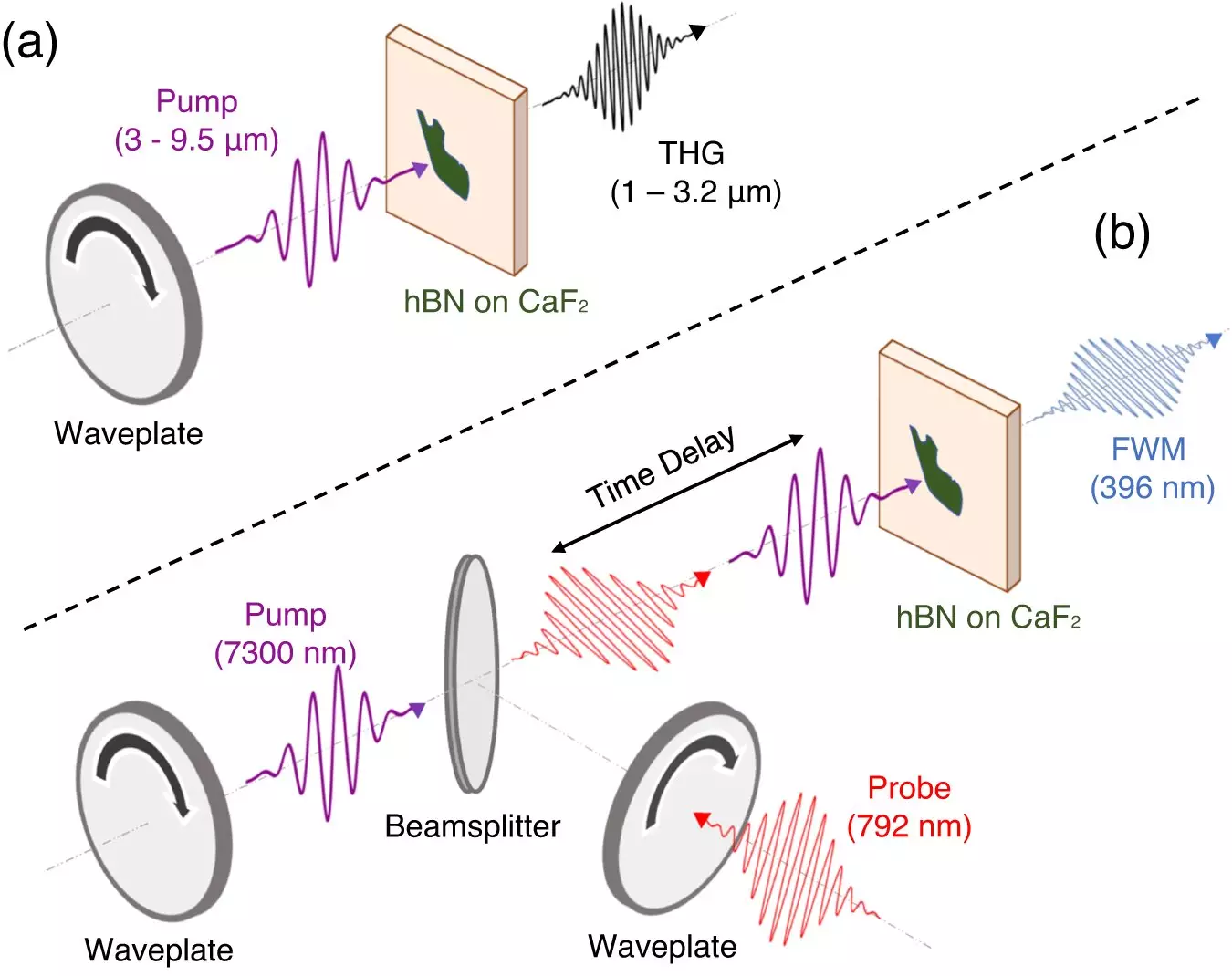Scientists and engineers at Columbia University, in collaboration with the Max Planck Institute, have made a groundbreaking discovery in the field of nonlinear optics. Through the innovative pairing of laser light with crystal lattice vibrations, the team has found a way to enhance the nonlinear optical properties of a layered 2D material. This breakthrough has the potential to revolutionize the field of optics and open doors to new applications in various industries. The research, published in the prestigious journal Nature Communications, showcases the promising future of this cutting-edge technology.
The team, led by Cecilia Chen, a Ph.D. student from Columbia University, focused their investigation on hexagonal boron nitride (hBN). Known for its structural similarity to graphene, hBN possesses atoms arranged in a honeycomb pattern that can be easily peeled into thin layers. This unique characteristic gives hBN its outstanding quantum properties. Moreover, Chen highlighted the stability of hBN at room temperature and the lightness of its constituent elements, boron and nitrogen. These properties result in rapid vibrations, or atomic vibrations, occurring within hBN.
Above absolute zero temperature, all materials undergo atomic vibrations. In the case of hBN, these vibrations can be quantized into quasiparticles known as phonons. The team specifically focused on the optical phonon mode vibrating at 41 THz, corresponding to a wavelength of 7.3 μm. This particular range falls within the mid-infrared regime of the electromagnetic spectrum. Although mid-IR wavelengths are considered high energy when viewed in the context of crystal vibrations, they are regarded as very low energy in most laser optics research.
Driving Phonons and Electrons Simultaneously
By fine-tuning their laser system to match hBN’s frequency at 7.3 μm, the research team achieved a significant breakthrough. Working alongside Chen were her fellow Ph.D. student, Jared Ginsberg, and postdoc Mehdi Jadidi. This team was able to coherently drive both the phonons and electrons of the hBN crystal, effectively generating new optical frequencies. This achievement is a crucial milestone in the realm of nonlinear optics, as the generation of new optical frequencies is a primary objective.
To gain a deeper understanding of their results, the researchers collaborated with Professor Angel Rubio’s group at the Max Planck Institute for the Structure and Dynamics of Matter. The theoretical work conducted by this team played a vital role in interpreting the experimental findings. This collaboration between theory and practice highlights the interdisciplinary nature of scientific research and emphasizes the power of combining expertise from multiple disciplines.
Unprecedented Advancements in Nonlinear Optical Effects
Using commercially available, table-top mid-infrared lasers, the research team delved into the phonon-mediated nonlinear optical process known as four-wave mixing. This process allowed them to generate light closely resembling harmonics of an optical signal. Furthermore, the team observed a remarkable increase of over 30 times in third-harmonic generation when compared to experiments conducted without exciting the phonons. This remarkable enhancement in nonlinear optical effects opens up a world of possibilities for future applications in various industries.
The research team is thrilled with their findings, as they have demonstrated how amplifying the natural phonon motion with laser driving can enhance nonlinear optical effects and generate new frequencies. Building upon this success, the team’s future plans involve exploring ways to modify hBN and other similar materials using light. These potential modifications could lead to even greater advancements in the field of nonlinear optics and pave the way for transformative applications in areas such as telecommunications, photonics, and quantum computing.
The recent breakthrough by Columbia University’s engineers and their collaborators at the Max Planck Institute has opened up new possibilities in the realm of nonlinear optics. By strategically combining laser light with crystal lattice vibrations, the team has successfully enhanced the nonlinear optical properties of a layered 2D material. The power of this innovation lies in its potential to revolutionize various industries and drive forward advancements in telecommunications, photonics, and quantum computing. This interdisciplinary research serves as a testament to the remarkable achievements that can be made when brilliant minds come together to push the boundaries of scientific discovery.


Leave a Reply